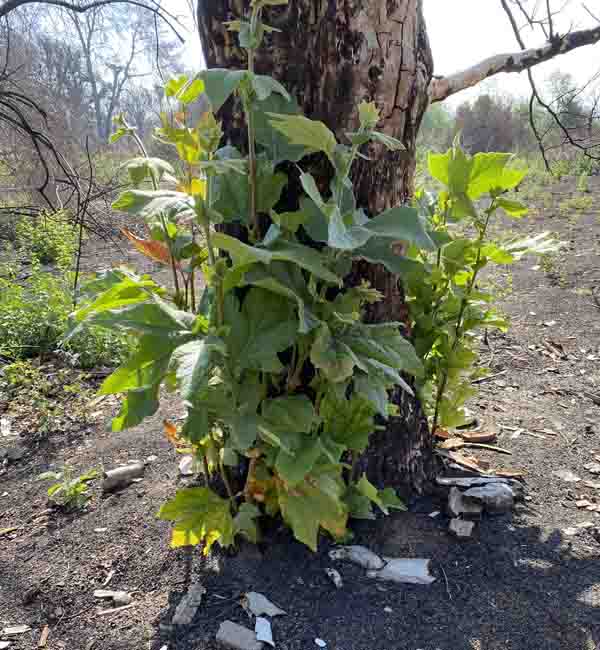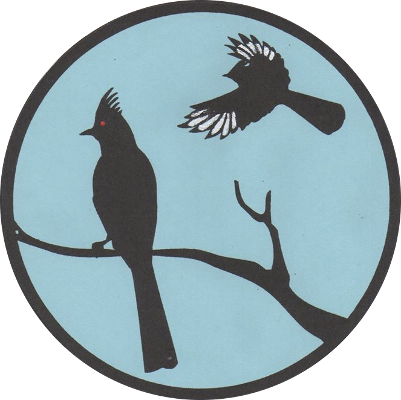
A group of eleven volunteer leaders of SFVAS’s special walks at the Sepulveda Basin Wildlife Reserve toured the reserve on March 25, looking at the fire impacts and the process of recovery. Those who had not visited since shortly after the devastating fire last September 6 were greatly heartened by the large number of green shoots: California Rose, Blackberry, Golden Currant were all sprouting from roots that survived. While trees rendered unsafe by fire are marked for removal, many will survive, with root sprouts up to three feet tall already emerging from their bases. Wildflowers were starting to appear, with some lupines and many fiddlenecks already flowering. Much of the natural recovery is spontaneous, even during this unusually dry rainy season. Some is due to efforts by members of the California Native Plant Society who have been removing invasive weeds that are unwelcome because they’re either poisonous, flammable or otherwise unfriendly to the habitat the Reserve is intended to provide. CNPS is also scattering seedballs, planting and irrigating native plants that enhance the habitat, providing food, shelter and nesting opportunities for wildlife.

The Wildlife Areas Steering Committee recently voted unanimously to open the previously-blocked path around the east side of the lake to visitors, so the group felt comfortable walking there. Nearing the end of the circuit of the lake, participants were impressed by the CNPS pre-fire planting of pollinator plants north of the lake, such as black sage, vervain, and narrow-leaf milkweed. The fire largely avoided that area, likely because it had previously been well-weeded.
Although focusing on the habitat, we enjoyed seeing abundant bird life. Kathy Barton commented that, overall, the species diversity was what she would expect for the time of year, though the sheer number of passerine birds was reduced, no doubt due to less suitable habitat for ground feeding and nesting. Hummingbirds were scarce, perhaps because the return of golden currant plants was in its early stages. She found a singing female purple finch, an uncommon bird for the Basin. The group was excited to see one Downy and one Nuttall’s Woodpecker. Waterbirds were abundant, including a large flock of American Wigeon that was likely migrating through. The number of herons and egrets was smaller than expected, but American White Pelicans remained in abundance.

All in all, we were encouraged by the extent of recovery. The fire has left us with something of a blank canvas: with sufficient hard work and, hopefully, engagement by donors and volunteers, the Reserve can return fully to life as high-quality habitat. When schools are ready to resume taking field trips, it should be ready once again as an urban sanctuary and venue for learning and enrichment.
To arrange a special tour of the Reserve for a group of eight or more people, please email Muriel.Kotin@sfvaudubon.org. Special tours are possible for any interest group, including for school groups interested in post fire recovery and volunteer opportunities.
